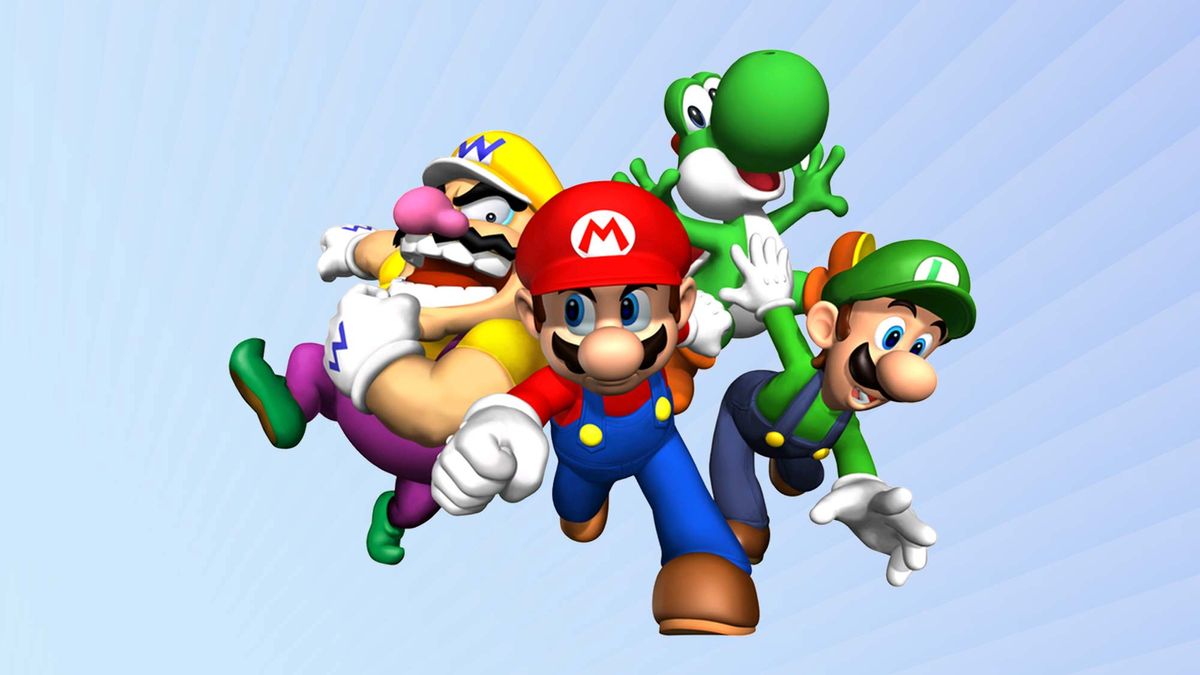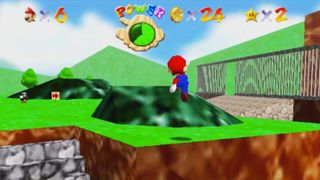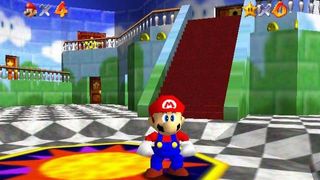Super Mario N64 retro review: 25 years since Nintendo stunned the world
25 years ago Nintendo introduced a whole new axis to gameplay with Super Mario N64

Console gaming was changed forever 25 years ago when Super Mario was released on the N64. At the risk of giving away my age, up until then, every game I had ever seen or played on a console, tape deck or floppy was either 2D or wireframe (cough).
I had recently arrived at university at the age of 19. The guy across from me in the student halls had just bought an N64 with Super Mario N64. Of course, compared to a modern gaming console, the N64 is puny, but in 1996, a 64-bit processor, from which the console takes its name, was almost twice as powerful as anything else on the market. Honestly, it is a bit like comparing Apollo 11 to an Apple Watch 6, but you can see below how the N64 stacks up against today’s Nintendo Switch.
| Row 0 - Cell 0 | N64 | Nintendo Switch |
| CPU | 64-bit NEC VR4300 @ 93.75 MHz | ARM 4 Cortex-A57 cores @ 1.02 GHz |
| GPU | 62.5 MHz | 768MHz |
| Memory | 4MB | 4GB |
| Storage | 4-64 MB Game Pak | 32 GB (expandable up to 2TB with SD card) |
| Video output | 240p | Up to 1080p via HDMI |
Now, these days, it’s hard to explain a world where every screen you ever saw had a tube and animation standards were set by Roger Rabbit. Back then, the Clone Wars was a comic book, people were still uncertain whether Boba Fett had escaped the Sarlacc, and there were rumors that George Lucas might have extra footage of Jabba the Hutt… it was a desert wasteland of answers.
I remember opening the door to my dormitory room and looking across the hallway to my neighbor Dave’s room. That evening, it was filled with captivated eyes, and before I knew it, I was invited to look at his new purchase. Staring at a triumphant Mario masterfully navigating scenes of vertigo and intrigue, the faces of the enchanted audience displayed an uncomfortable wonder at the scene depicted on the screen. As Mario leaped over yet another gaping chasm to a beautiful, green patchwork meadow I found myself asking, “WTF, why was this so unsettling?”
I can’t understate what a moment this was. I was feeling a little giddy just watching. Up until then, there wasn’t much in terms of mind-bending game programming. I recall the famous grand leap on Ghost Valley 2 in Super Mario Kart SNES, which back then, made me feel a little ill (mainly because of the speed and commitment needed to land it - Oh how I loved landing it!). Then there was the groundbreaking motion-capture work of Another World and Flashback (yeah, right, we are talking old-school). And let’s not forget the yawning expanse of Elite Frontier except you mostly had to imagine it. But this was something else. It was really THREE DIMENSIONAL!

I had to admit, it was the scale at which Nintendo extrapolated the perspective that made me queasy. Queasy in a sky-diving, or bungy jumping kind of way, not a “this is gonna take me until next month” kinda way. Super Mario, in that year for the UK public (at least), broke a literal dimensional wall. It created an appetite for 3D games, like GoldenEye 007 and Doom, which, I would suggest, laid the groundwork for VR as we currently see it.
Needless to say, I spent many hours of the following months in Dave’s room conquering the vertiginous terraces of Princess Peach’s castle in my quest to rescue her from Bowser. The new god-like feeling of panning and zooming the perspective, in glorious three dimensions, took a long time to fade. It was made possible by Nintendo’s bizarre and not entirely ergonomic three-handed controller which had a mini joystick on its central strut.
Stay in the know with Laptop Mag
Get our in-depth reviews, helpful tips, great deals, and the biggest news stories delivered to your inbox.

Even after Princess Peach had been emancipated and Bowser vanquished, it was this controller that would find its way into my hands before the PlayStation’s, and not just because of the various ways you could hold it. To its credit, the PlayStation did offer Ridge Racer (a famous 3D graphics forerunner) but Sony's console didn't give me the satisfaction of hunting Sean Bean, or for that matter, my friends, which GoldenEye did. The four-player split-screen versus version became a staple at house parties for years to come.
Nowadays, we don’t think anything of simulated three-dimensional space. Actors are regularly filmed for motion capture in games. Lucasfilm has spent these last decades upending the entire approach by developing a dedicated lightstage to integrate actors with animation in real-time and create the Mandalorian (which is amazing right?). Today you can even attend digital classes in 3D-VR! But in 1996, just being able to calculate an extra axis in animated space was enough to be unreal in an "unpacking reality" kind of way — and we have Super Mario N64 to thank for the spectacle.
Peter (PJ) Norman has worked in the photography, film, and music fields since graduating with a Music Science degree in London in 2000. He moved to New York in 2009 to be a freelance producer and creative and has been based in the city ever since. His film work has been accepted to multiple International film festivals including Sundance and Locarno, and his passion for music has led to contributions on more than 10 full-length albums. Peter will occasionally test and write about things that inspire him for Laptop Mag when he isn't helping on the multimedia side of things. He is happiest when lost in the play of light and sound with his Nikon FM2 and a roll of black-and-white film.
